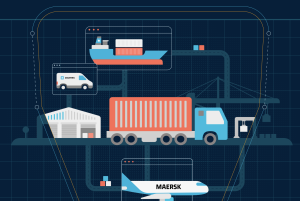 In today’s economy the question isn’t whether your suppliers may be at risk of failing. It’s a matter of which suppliers will fail and when. Many companies lack any sort of tools or processes to identify and effectively mitigate problems across their global supply chains. Are you among them?
In today’s economy the question isn’t whether your suppliers may be at risk of failing. It’s a matter of which suppliers will fail and when. Many companies lack any sort of tools or processes to identify and effectively mitigate problems across their global supply chains. Are you among them?
Having information on supplier financial viability and operational performance is critical to assessing exposure to risk. But it doesn’t provide a full picture and isn’t enough to help mitigate potentially negative effects on your business, Sundar Kamakshisundaram, Director of Solutions Marketing, for Ariba, an SAP Company, tells SmartProcurement.
Managing risk is fraught with challenges. There are market complexities to contend with such as a fragmented supply base with varying degrees of supplier capability; currency and commodity volatility; and intricate pricing and discounting structures. And then there are category complexities, including detailed specs and large numbers of line items to be evaluated with pricing dependent on both regions and volume, among other things. So what’s an organisation to do?
Assess the situation
In order to effectively manage supply risk, you must first understand your exposure. To get an accurate picture requires action on a number of fronts, including:
• Analysing the financial health and stability of suppliers using detailed financial information.
• Obtaining proof of financial soundness through site visits.
• Creating detailed supplier risk profiles to determine category and industry threats.
• Examining commodity and underlying supply market trends to discern the potential impact of supply constraints and price fluctuations across top and sub-tier supply chains.
• Investigating the stability of raw material supply and possible effects of trends such as market consolidation and capacity constraints.
While key pieces of this task can be automated, it is critical to leverage supporting services and expertise to ensure you get the information you need to develop and execute a sound strategy to conquer your risk. As the saying goes, garbage in, garbage out.
Many companies lack tools and processes to identify and mitigate problems across their global supply chains. And as tough economic conditions persist, the odds are that your company will face some form of supply disruption increase.
What to do?
Prepare a plan B and C
To minimise the impact, you must be able to quickly discover, assess and bring on board new supply partners, ensure their information is accurate and up-to-date, and continually measure and improve their performance.
While it may sound complicated, there are solutions on the market that will enable you to quickly and easily:
• Reduce the cost and time involved in supplier discovery and assessment, which can account for up to half of the sourcing cycle – as well as on-boarding and management so that as suppliers fail, new ones can quickly be identified and brought up to speed.
• Gain a 360-degree view into supplier information, including contracts, quotes, performance, certificates, internal stakeholders and contacts.
• Access additional information, performance ratings and alternative sources of supply.
• Speed supplier assessment and qualification by automating information collection and new supplier approval processes.
• Ensure proper supplier selection, measurement and risk and performance management.
Invest in them.
What can you do to prepare for potential supply risks that may come your way?
Manage your suppliers
Managing a global supply base can be challenging. Many companies have large numbers of suppliers to contend with. Their data is fragmented; spread across multiple systems; and goals, metrics, and measurements are inconsistent (if they exist at all).
There are steps that you can take to overcome these obstacles.
• Avoid critical supply problems through tight collaboration with and frequent measurement of key suppliers.
• Award more business to high performers based on quality, timeliness and other key performance indicators.
• Ensure that future sourcing activities take performance and quality into account.
• Manage more suppliers using automated processes and scoring / analysis tools.
• Give suppliers visibility into performance issues and quality problems so that they can act swiftly to correct them.
Again, much of this can be automated through technology. But technology alone isn’t the answer. In order to effectively manage your trading relationships and get the information you need to make better business decisions you need market knowledge, category expertise, and best-practice processes.
Be realistic
Companies today face more supply risks and challenges than ever before. So don’t think it can’t or won’t happen to you.
Protect your company by knowing your risks and identifying the right combination of technology, expertise and services to effectively manage and overcome them.


























